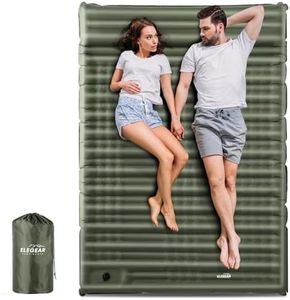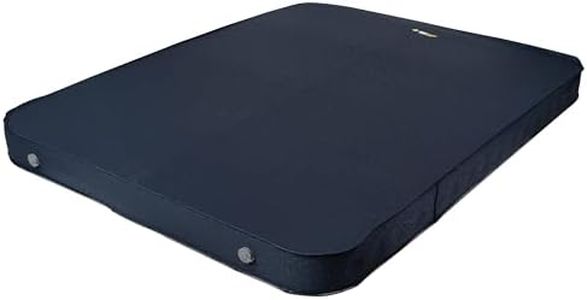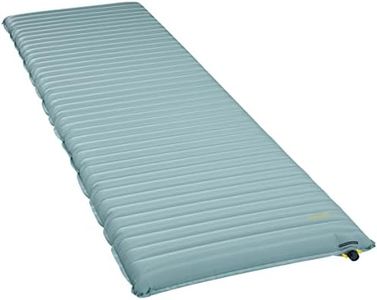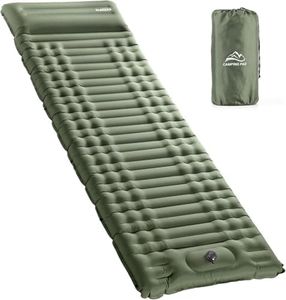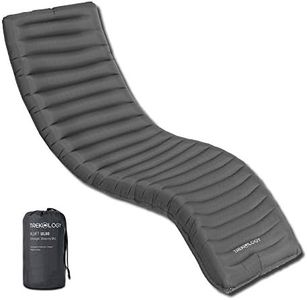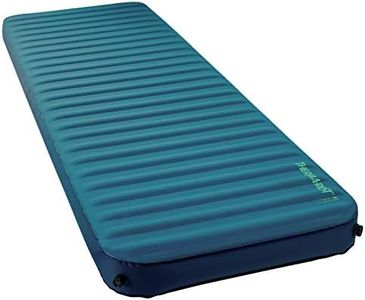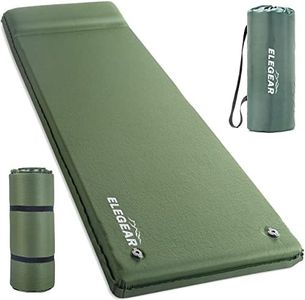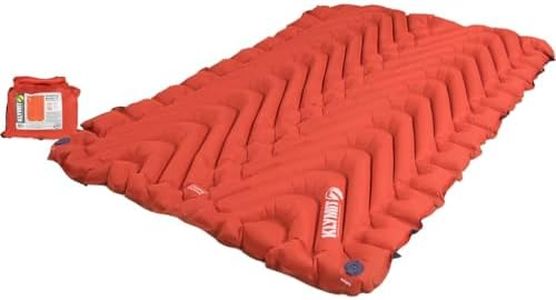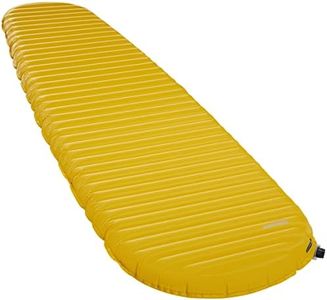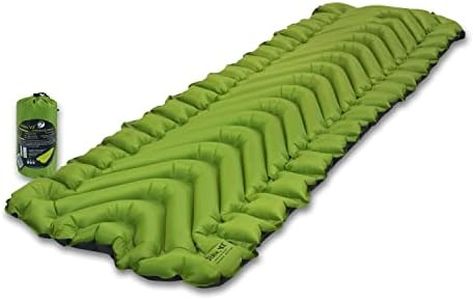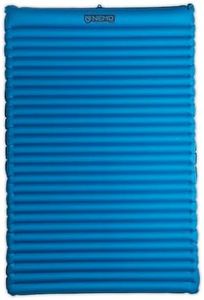We Use CookiesWe use cookies to enhance the security, performance,
functionality and for analytical and promotional activities. By continuing to browse this site you
are agreeing to our privacy policy
10 Best Sleeping Pads
From leading brands and best sellers available on the web.Buying Guide for the Best Sleeping Pads
Choosing the right sleeping pad is vital for a good night's sleep outdoors, whether you're camping, backpacking, or simply wanting extra comfort at home. A sleeping pad not only provides cushioning from the hard ground but also adds insulation to keep you warm. Understanding the different types and specifications will help you make an informed decision that best suits your needs and sleeping preferences.Type of Sleeping PadThe main types of sleeping pads are air pads, self-inflating pads, and closed-cell foam pads. Air pads are lightweight and pack down small, making them great for backpackers, but they require inflating and can sometimes be punctured. Self-inflating pads combine foam and air and offer a balance of comfort and ease of use, though they are usually heavier. Closed-cell foam pads are the most durable and lightweight, but they tend to be bulkier and firm. Think about where you'll use the pad—if you need portability, air or closed-cell foam pads might be better, but for car camping or more comfort, you might prefer a self-inflating pad.
R-Value (Insulation)R-value measures a sleeping pad's ability to insulate you from the cold ground. The higher the R-value, the better it keeps you warm. For summer camping, a low R-value (around 1-2) should be enough; for spring or fall, look for mid-range values (2-4); and for cold or winter conditions, go for a high R-value (5 and above). Choose your R-value based on the coldest temperatures you expect, since even in summer, ground can sap your heat at night.
Thickness and ComfortThickness refers to how much padding the sleeping pad provides, typically ranging from about 0.5 inches to over 3 inches. Thinner pads are lighter and may be adequate for those who sleep on their back or don't require much cushion. Thicker pads provide more comfort, especially for side sleepers or those with joint issues, but they can add weight and bulk. Consider your personal comfort needs and how much weight you're willing to carry when picking the thickness.
Size and ShapeSleeping pads come in a range of lengths and widths, as well as different shapes like rectangular or mummy (tapered) designs. Standard pads usually fit most adults, but longer or wider options are available for taller or restless sleepers. Mummy-shaped pads save weight and space but might feel restrictive. Pick the size and shape that matches your body and how you move in your sleep, but also ensure it fits in your tent or on your sleeping surface.
Weight and PackabilityWeight refers to how heavy the sleeping pad is, and packability is how small it can be compressed for transport. For backpacking, light and compact pads are important to save space and effort. For camping with a car, weight and size are less critical, so you can choose a thicker, more comfortable pad. Think about how you'll be carrying the pad and how much room you have in your pack to decide which trade-off is best.
Durability and MaterialDurability depends on the strength of the material and construction. Stronger materials resist punctures and wear but may be heavier. Consider how rough your usage will be—if you're camping in rocky areas or have pets, look for tougher materials; otherwise, lighter fabrics may suit you and reduce carry weight. Also, check for repair kits or warranty in case of accidental damage.
Ease of UseEase of use includes how quickly you can inflate or deflate the pad, and whether it requires any special accessories. Air pads may require a pump or lung power, while self-inflating pads are quicker to set up. Foam pads can be rolled or folded without setup. If convenience is your top concern, look for easy inflation valves, fast deflation, and storage features.

